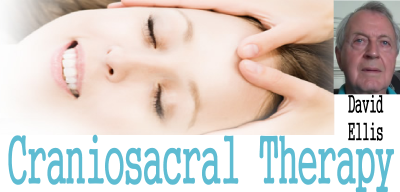(Note: for ease of reference the page numbers quoted in the endnotes are all from one book:’ Energy Medicine in Therapeutics and Human Performance’ by James Oschman).
In the main, scientific research is confined to three areas: the ability of cells to remember how to deal with wounds ‘memory’ operating in immune system cells and also muscle memory particularly in competitive sports. Such research is ongoing. So far no researcher has found it worthwhile to raise funds for wider research although I am aware of PhD projects under consideration.
One American scientist, at least, is trying to redress this. Jim Oschman regularly challenges biomedicine to recognise communication systems within the body that lie outside the neural and associated chemical circuitry; and also the role that the living matrix plays in providing the means by which these circuits interrelate with neurological systems.
The living matrix is the description given not only to connective tissue but also to its continuity with the whole of the internal structure of every cell in the body, including the cell nucleus and cellular DNA. It is a semiconductor. This means that electrical information is not only conducted through it but that it is also capable of storing and giving access to it.
It’s a short step from the science that confirms the existence of tissue memory relating to healing wounds to a hypothesis that cells are capable of storing all types of information in ways that can not only be communicated to every other cell of the body but that it can also be accessed. Research carried out by Wilder Penfield – a Canadian Neurosurgeon – supports this hypothesis.
Redpath noted that trauma is set in place a fraction of a second before our conscious awareness of it. This is significant for treating trauma because, as a hypothesis, the ‘record’ of the trauma lies outside the brain’s thought and speech centres and perhaps even outside the nervous system.
Acknowledgement (or Acceptance)
One of the key principles espoused at this workshop is that acknowledgement by the patient of information given by the tissues during treatment is sufficient to release the energy block and thus lead to complete healing over the course of the next few treatments. I find that this principle applies to mental disturbances as well as physical pathologies. This suggests to me that all traumas are capable of being handled effectively in the same way and with much less risk of re-traumatising the patient.
This flies in the face of recommendations from some trauma specialists and therefore needs to be handled carefully! There is some limited scientific validation.
The Respiratory Diaphragm
I find this features greatly in tissue memory recall. It’s worthwhile reading the paper that Leon Chaitow delivered at the 2003 AGM of the Craniosacraltherapy organisation of the UK, especially its links with the cranial bones.
I don’t have any conclusion to offer you about this except that the ethmoid is also a repository of tissue memory and there seems to be a tissue memory link between tension at the atlanto-occipital joint and nasal congestion (the ethmoid contributing significantly to the nasal cavity). It’s one more example of the resonance between tissue memory and physiology. One possible hypothesis is that the ethmoid gives information about direction (or lack of direction) in our lives and hence there’s a possible tissue memory link with the A-O joint that carries tensions when we neglect our own needs in favour of others in our lives.
The Heart
If you’re interested in reading more about the spiritual aspect of the heart, visit www.heartbeat2000.com and click ‘Research’.
For its electro-magnetic role in ANS balancing, visit www.heartmath.org and click ‘Research’; and for the importance of heart rate variability visit www.heartbeat2000.com/dardik.htm
Weiss 1925 (and other subsequent) – see page 167
Springer 1994 – see page 328
Young 1975 – page 307
Page 317
Penfield 1975 – see page 282
Redpath 1995 (Trauma Energetics) – pages 323/324
Redpath 1995 – page 331
Page 333
‘Breathing and Cranial Dysfunction’: Leon Chaitow ND DO University of Westminster, London
Bibliography
‘Energy Medicine: the Scientific Evidence’ by James Oschman.
‘Energy Medicine in Therapeutics and Human Performance’ by James Oschman
‘Bioenergetics’ by Alexander Lowen MD
‘Love, Sex and your Heart’ by Alexander Lowen MD
Note: these two books are not available at mainline bookshops. You need to visit www.bioenergeticspress.com to order them.
‘Cell Talk’ by John E Upledger D.O. O.M.M
‘Shaman, Healer, Sage’ by Alberto Villoldo, PhD (if you’re interested in the shamanic view of healing through the chakras).
